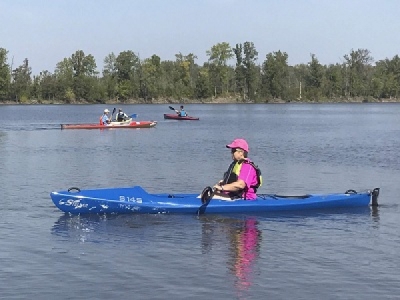
Posted on March 15, 2018
ANOTHER ambitious plan that would have a significant impact on the future of the Mississippi River near Quincy could be on the horizon.
The U.S. Army Corps of Engineers announced last week that major restoration work to address shallow water depths caused by years of sediment accumulation in Quincy Bay is one of 10 river projects under consideration for federal funding through the Water Resources Development Act of 1986.
If approved, the proposed $20 million project would enable the dredging of 118 acres of Quincy Bay, building dike and wire structures at the Bay Island access channel, and creating above flood elevation islands on Bay Island and northeast of Triangle Lake for reforestation.
That the project has finally made the Corps’ short list after several unsuccessful attempts is a major achievement for members of the Quincy Bay Area Restoration and Enhancement Association.
However, that is only half the battle.
Only three of the projects being considered will receive funding. That means it is incumbent on the association to demonstrate widespread support from community leaders, boaters, hunters, fishermen, and other river and outdoor enthusiasts in the weeks and months ahead to help maximize its chances.
Specifically, being able to use dredged materials to build elevated areas in the northern and western sectors of Quincy Bay will accelerate water flow from Bob Bangert Park downstream to reduce by as much as 50 percent the sediment accumulation that has dropped water depths to as low as one foot in some places.
“We’ve lost a lot of people that would be docking in Quincy because they can’t get their boats into the bay” because of low water levels, Mike Klingner of Klingner and Associates, told The Herald-Whig.
This work, which could begin as early as 2020, would reduce the negative impact of natural flooding and erosion, improve access for boaters, and help support fish and other wildlife habitats along the river.
It should be noted that the association has been successful in rehabilitating 270 acres around the Triangle Lake area of the bay to sustain wildlife. In addition, the Mississippi Valley Hunters and Fishermen’s Association and Quincy Park District are on track to restore 26 acres of Bob Bangert Park to wetlands so it can be used for ecological and environmental programs.
With that track record of success, addressing the problems with the Quincy Bay area is a logical next step that could reap significant rewards if the Corps decides to fund it.
You can help by sending a letter of support to: U.S. Army Corps of Engineers, Rock Island District, Clock Tower Building, P.O. Box 2004, Rock Island, IL 61204-2004.
The Mississippi River — and by extension, Quincy Bay — is one of our most prized assets, and we as a community must maximize its potential.
Let’s do our part by supporting members of the Quincy Bay Area Restoration and Enhancement Association so we can take advantage of a revitalization effort that could carry significant river benefits for decades to come.
Source: Herald-Whig





